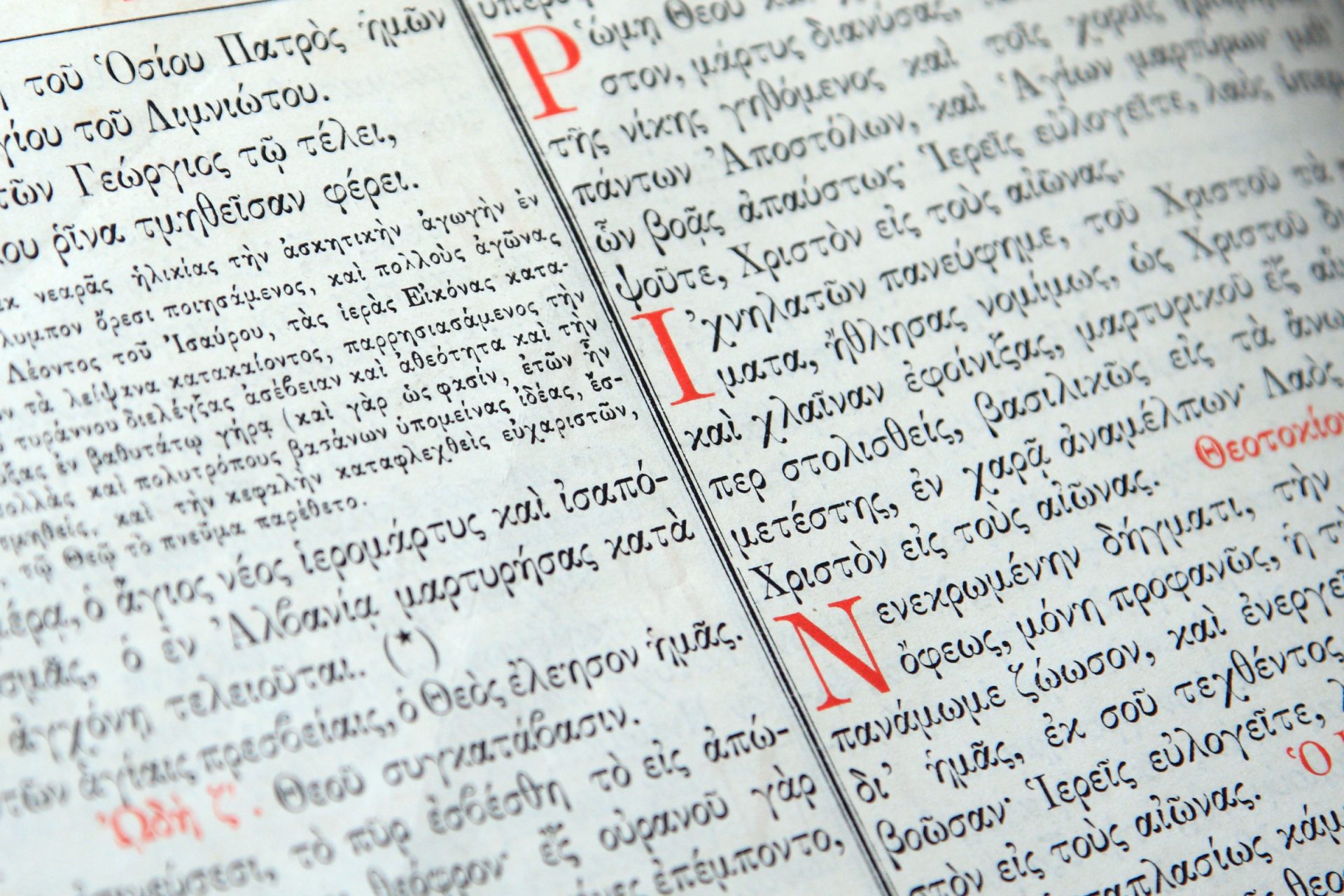When a text from one language is translated into another language, it is common for there to be mistranslations and discrepancies. And sometimes there is no exact translation of one word in another language, so the original meanings of words are sometimes lost when translating into another language. And over time the meanings of words also change, causing a translation to deviate even more from the source language. And translations are sometimes subjective, relying on the interpretation of the translator. The original language of the Torah and the Tanakh entirely is Hebrew, so the Hebrew text will always be superior and more original than any text in any other language. Which is also true even if the text is a copy from an older text, because the older text and the new copy are in the same language. Even though copy errors are possible, but the overall copy will be closer to the original older Hebrew source than any translation and its own copies.
The rabbis of Judaism consider the Hebrew Masoretic Text, MT, to be the supreme authoritative text of the Torah and the Tanakh entirely, so all versions of the scriptures, whether newer copies or translations must be compared to the MT, because it is the most original text we have in existence today. Even though the MT is essentially a copy from an older Hebrew text, but it is still the closest to the original Hebrew text we have. The scribes of Judaism have inspection protocols to certify that a copy of the Torah is kosher and exact, so there is less likeness of errors than would be found in the translations of the Torah and Tanakh entirely. Although the best translation of the Torah is the Aramaic Targum Onkelos, TO, which is even considered to be authoritative by the rabbis of Judaism.
The MT is remarkably intact, although not totally perfect, since I myself have observed one copy omission and one copy error when comparing it to another Hebrew text, the Samaritan Pentateuch, SP, and even when comparing against the Greek Septuagint, GS, which is a translation and less preferable. In Exodus 12:40, “and Canaan” is missing from the MT, but it is included in the SP, and even also in the GS. And in 2 Chronicles 22:2, 42 incorrectly appears in the MT, but 22 correctly appears in the GS. In these two cases we can see that although translations are less preferable, sometimes they do help corroborate or even correct minor copy errors that can exist in the MT. This is why it is best to also analyze all available copies and all available translations, and compare with each other, to arrive at the truth of what the original ancient Hebrew source text had. The SP is also a very valuable Hebrew copy that helps corroborate the Hebrew MT, but, it does have some errors as well. The TO is actually better than the SP, even as a translation. And the TO is also much better than the GS, which is also named the LXX. But the best text of all the Torah and Tanakh entirely is the MT.
When trying to derive the current year from creation using the genealogical numbers found in the Torah in the book of Genesis, variations can be seen between the Hebrew and Greek texts, specifically between the MT, and the GS, and the Greek books of Antiquities of Josephus, JA. From Adam to Nahor there are a total of 18 genealogical records found in the MT, and when comparing those records to the GS, only 4 records match. These are the only 4 records that match.
| Masoretic Text (Hebrew), MT | Septuagint (Greek), GS | Josephus Antiquities (Greek), JA | |
| Jared | 162 | 162 | 162 |
| Methuselah | 187 | 187 | 187 |
| Noah | 503 | 503 | N/A |
| Shem | 100 | 100 | N/A |
But for the remaining 14 genealogical records there are variations found in the GS, and there is even 1 additional record found in the GS, which is not found in the MT nor is even mentioned in the JA. In the GS there are actually 19 genealogical records from Adam to Nahor, in comparison to the 18 found in the MT. This is strange and I will discuss this later on. Of the 14 records in the GS that do not match the records in the MT, there are 11 records that have a very apparent pattern. 100 is added to each record, when comparing the genealogical numbers in the GS and even the JA to the numbers in the MT. As can be seen in the table below. Some genealogical records have been skipped in this table to highlight the pattern in these specific variations.
| Masoretic Text (Hebrew), MT | Septuagint (Greek), GS | Josephus Antiquities (Greek), JA | |
| Adam | 130 | 230 | 230 |
| Seth | 105 | 205 | 205 |
| Enosh | 90 | 190 | 190 |
| Kenan | 70 | 170 | 170 |
| Mahalalel | 65 | 165 | 165 |
| Enoch | 65 | 165 | 165 |
| Arphaxad | 35 | 135 | 135 |
| Shelah | 30 | 130 | 130 |
| Eber | 34 | 134 | 134 |
| Peleg | 30 | 130 | 130 |
| Reu | 32 | 132 | 132 |
The pattern is very apparent, and it is likely to be a mistranslation of the Greek numerals being used in the GS and in the JA. Greek numerals and even Roman numerals are different than our modern numbering system, and in Roman numerals “III” means 3 and “IV” means 4 and “V” means 5 and “VI” means 6. Notice how to derive 4, 1 is subtracted from 5, because the “I” appears before the “V”, but to derive 6, 1 is added to 5, because the “I” appears after the “V”. The Roman numeral system has rules that today are known to us, but this may not be the case with the Greek numeral system, and perhaps not all the rules of the Greek numeral system are known to us today. Because this same pattern of discrepancies also appears in the Greek writings of Josephus, not just in the GS. I doubt that Josephus and also the translators that wrote the GS would have made so many translations errors, but rather, I think it is more likely that we are the ones who are mistranslating the GS and JA writings into our modern languages today. Below is the same discrepancy pattern in this other text in the JA.
Arphaxad was the son of Shem, and born twelve years after the deluge.
The Antiquities of the Jews Book 1, Chapter 6, by Flavius Josephus
Note: This is merely a reference to an external literature to help strengthen the statements made in this study, and not an endorsement of any other literature or statements made by
Flavius Josephus.
Notice the same pattern here, rather than 100 being added, 10 is added to the number. The correct number should be 2, not 12. As we see here in the MT and also in the SP, and even also in the GS, which did not diverge as the JA text did.
Shem was a hundred years old, and begot Arpachshad two years after the flood.
Genesis 11:10
JPS Tanakh 1917
Note: Based on the Hebrew Masoretic Text.
Shem was an hundred years old, and begat Arphaxad two years after the flood
Genesis 11:10
Samaritan Pentateuch in English
Shem was a hundred years old when he procreated Arphaxad, the second year after the flood.
Genesis 11:10
Apostolic Bible Polyglot
Note: Based on the Greek Septuagint.
And the same pattern happens again here, again 10 being added to the number, and appearing incorrectly as the 27th, which is also happens in the GS this time,
Now he says, that this flood began on the twenty-seventh day of the forementioned month.
The Antiquities of the Jews Book 1, Chapter 3, by Flavius Josephus
Note: This is merely a reference to an external literature to help strengthen the statements made in this study, and not an endorsement of any other literature or statements made by
Flavius Josephus.
Seventh and twentieth of the month, in this day, all the springs of the abyss tore, and the torrests of the heaven were opened.
Genesis 7:11
Apostolic Bible Polyglot
Note: Based on the Greek Septuagint.
But in the MT, and the SP, the text appears correctly as the 17th day of the month as the day when the flood began.
on the seventeenth day of the month, on the same day were all the fountains of the great deep broken up, and the windows of heaven were opened
Genesis 7:11
JPS Tanakh 1917
Note: Based on the Hebrew Masoretic Text.
the seventeenth day of the month, the same day were all the fountains of the great deep broken up, and the windows of heaven were opened
Genesis 7:11
Samaritan Pentateuch in English
And again the same pattern happens again here in the JA, which incorrectly says 2,656 years passed from Adam to the flood, but when adding up the numbers found in the MT, 1,656 years had passed. There is a 1,000 year difference, which coincides with the discrepancy pattern of 10’s or 100’s being added to certain numbers derived from the Greek texts. What do all these discrepancy patterns have in common? They are all based on ten. Perhaps there must be some rule in the ancient Greek numeral system that is not well understood today that is being mistranslated into our modern languages.
and this was two thousand six hundred and fifty six from Adam the first man: and the time is written down in our sacred Books. Those who then lived having noted down, with great accuracy, both the births and deaths of illustrious men
The Antiquities of the Jews Book 1, Chapter 3, by Flavius Josephus
Note: This is merely a reference to an external literature to help strengthen the statements made in this study, and not an endorsement of any other literature or statements made by
Flavius Josephus.
Below are the numbers indicated in the MT, where we can see that 1,656 years had passed from Adam to the flood. Was Josephus in error by 1,000 years? No. The Greek number he wrote was mistranslated into our language as 2,656 years, and should be 1,656 years.
| Masoretic Text (Hebrew), MT | |
| Adam | 130 |
| Seth | 105 |
| Enosh | 90 |
| Kenan | 70 |
| Mahalalel | 65 |
| Jared | 162 |
| Enoch | 65 |
| Methuselah | 187 |
| Lamech | 182 |
| Noah | 503 |
| Shem | 100 |
When adding these numbers from the MT, we get 1,659 years from Adam to the birth of Shem, which was “2 years after the flood”, which would therefore be the 3rd year after the flood began, because “2 years after the flood” would be reckoned to be at the end of the flood, not at the beginning of the flood, just as if a drought lasted 10 years, and someone said, “2 years after the drought”, it would be understood to mean 2 years after the drought ended, not 2 years after it began, because at the 2nd year of the 10 year drought it would still be ongoing and would not make sense to mean after it began. And since the flood lasted around 1 year, we therefore subtract 3 years, 1 year for the duration of the flood plus 2 years until the birth of Shem after the end of the flood, and then we get 1,656 years from Adam to the flood. Which matches with what Josephus said, once we correct the 1,000 year mistranslation of 2,656 to the correct 1,656 years.
and this was one thousand six hundred and fifty six from Adam the first man: and the time is written down in our sacred Books. Those who then lived having noted down, with great accuracy, both the births and deaths of illustrious men
The Antiquities of the Jews Book 1, Chapter 3, by Flavius Josephus
Note: Corrected version, fixing the mistranslation of 2,656 years to 1,656 years. This is merely a reference to an external literature to help strengthen the statements made in this study, and not an endorsement of any other literature or statements made by
Flavius Josephus.
And again the pattern repeats with Josephus saying that at his time 5,000 years of history had been recorded in the set-apart books, but only really around 4,000 years had passed to around his time, because the year of the anointing of Yeshua in 26 AD was the year 4,000 from creation. So again, 1,000 years was added.
Those antiquities contain the history of five thousand years; and are taken out of our sacred books: but are translated by me into the Greek tongue
The Antiquities of the Jews Against Apion Book 1, Paragraph 1, by Flavius Josephus
Note: This is merely a reference to an external literature to help strengthen the statements made in this study, and not an endorsement of any other literature or statements made by
Flavius Josephus.
Those antiquities contain the history of four thousand years; and are taken out of our sacred books: but are translated by me into the Greek tongue
The Antiquities of the Jews Against Apion Book 1, Paragraph 1, by Flavius Josephus
Note: Corrected version, fixing the mistranslation of 5,000 years to 4,000 years. This is merely a reference to an external literature to help strengthen the statements made in this study, and not an endorsement of any other literature or statements made by
Flavius Josephus.
As such, regarding the mistranslation pattern in these records in the Greek texts, perhaps the first 10 or first 100 or first 1,000 are silent in the Greek numeral system? Perhaps it is just an indicator? This is a mystery, but it is apparent that our modern day translators have not translated these Greek numbers correctly into our modern languages, which is why there are variations between the Hebrew and Greek texts. They are mistranslations. And the correct numbers are the ones in the MT. Which is why after making the 1,000 year correction to the JA number mistranslation, ultimately Josephus concludes that 1,656 years passed from Adam to the flood of Noah, which agrees with the numbers found in the MT, and even in the TO. If the numbers Josephus had stated were true, even those numbers would not have added up to 2,656 years. Clearly there is a mistranslation there.
Aside from the discrepancy patterns above, there are some 3 other variations in the GS and JA that are translation or copy errors. In one case the JA agrees with the MT. But then in the other 2 cases they all disagree with each other. Which numbers are correct? The MT numbers.
| Masoretic Text (Hebrew), MT | Septuagint (Greek), GS | Josephus Antiquities (Greek), JA | |
| Lamech | 182 | 188 | 182 |
| Serug | 30 | 130 | 132 |
| Nahor | 29 | 79 | 120 |
And then in the GS there is 1 additional genealogical record not found in the MT nor is even mentioned by JA. It is an extra person in the genealogical records. This is a translation or copy error.
| Masoretic Text (Hebrew), MT | Septuagint (Greek), GS | Josephus Antiquities (Greek), JA | |
| Cainan | N/A | 130 | N/A |
Although this translation or copy error is repeated in Luke, who does mention Cainan also.
the son of Cainan, the son of Arphaxad, the son of Shem, the son of Noah, the son of Lamech
Luke 3:36
English Standard Version
But the MT nor even the SP mention Cainan, so this is a translation or copy error, in the GS and also in Luke. This name might have been an accidental repeat of “Kenan”, the 4th person in the genealogical records of Genesis. Kenan is the same name of Cainan, just spelled differently in our language, just as Arphaxad is the same name of Arpachshad, just spelled differently in our language, depending on the translation. So this is why the addition of Cainan might just be an accidental repeat of Kenan. It is possible that the name Cainan was accidentally repeated into an earlier text and permeated into most if not all translations and copies known today. But JA never mentions Cainan a second time, and even Julius Africanus also does not mention a son of Arphaxad named Cainan. It is obviously an error in translation or copy. The TO also does not mention a son of Arphaxad named Cainan.
These are the generations of Shem. When Shem was 100 years old, he fathered Arpachshad two years after the flood. And Shem lived after he fathered Arpachshad 500 years and had other sons and daughters. When Arpachshad had lived 35 years, he fathered Shelah.
Genesis 11:10-12
English Standard Version
Note: Based on the Hebrew Masoretic Text.
Shem, Arpachshad, Shelah.
1 Chronicles 1:24
English Standard Version
Note: Based on the Hebrew Masoretic Text.
These are the generations of Shem. Shem was an hundred years old, and begat Arphaxad two years after the flood. And Shem lived after he begat Arphaxad five hundred years, and begat sons and daughters. And they were all days of Shem six hundred years and he is dying. And Arphaxad lived five and thirty and one hundred years, and begat Salah.
Genesis 11:10-12
Samaritan Pentateuch in English
Note: There is an error in this text from the SP. Arphaxad begat Salah when he was 35 years old, not 135.
These are the histories of Sheim. Sheim was one hundred years old, and he had Arpachshad two years after the Flood. Sheim lived after he had Arpachshad, five hundred years, and he had sons and daughters. Arpachshad lived thirty-five years and had Shelach.
Genesis 11:10-12
Targum Onkelos, Metsudah Chumash, Metsudah Publications, 2009
As such, the SP matches in 9 records with the MT in the 18 records from Adam to Nahor, but does not match in the other 9 records. And in 6 of those 9 records it deviates from the MT in a similar pattern as seen in the GS, adding 100’s to the number. It is a mystery why the SP deviates from the MT.
| Masoretic Text (Hebrew), MT | Samaritan Pentateuch (Hebrew), SP | |
| Adam | 130 | 130 |
| Seth | 105 | 105 |
| Enosh | 90 | 90 |
| Kenan | 70 | 70 |
| Mahalalel | 65 | 65 |
| Jared | 162 | 162 |
| Enoch | 65 | 65 |
| Methuselah | 187 | 67 |
| Lamech | 182 | 53 |
| Noah | 503 | 503 |
| Shem | 100 | 100 |
| Arphaxad | 35 | 135 |
| Shelah | 30 | 130 |
| Eber | 34 | 134 |
| Peleg | 30 | 130 |
| Reu | 32 | 132 |
| Serug | 30 | 130 |
| Nahor | 29 | 79 |
And finally, the correct numbers are found in the MT, which is corroborated by the TO, which are both considered to be authoritative texts by the rabbis of Judaism. From Adam to Nahor there should be 18 genealogical records, reading as follows in order, Adam, Seth, Enosh, Kenan, Mahalalel, Jared, Enoch, Methuselah, Lamech, Noah, Shem, Arphaxad, Shelah, Eber, Peleg, Reu, Serug, Nahor. And below are the correct genealogical numbers, perfectly matching between the MT and TO.
| Masoretic Text (Hebrew), MT | Targum Onkelos (Aramaic), TO | |
| Adam | 130 | 130 |
| Seth | 105 | 105 |
| Enosh | 90 | 90 |
| Kenan | 70 | 70 |
| Mahalalel | 65 | 65 |
| Jared | 162 | 162 |
| Enoch | 65 | 65 |
| Methuselah | 187 | 187 |
| Lamech | 182 | 182 |
| Noah | 503 | 503 |
| Shem | 100 | 100 |
| Arphaxad | 35 | 35 |
| Shelah | 30 | 30 |
| Eber | 34 | 34 |
| Peleg | 30 | 30 |
| Reu | 32 | 32 |
| Serug | 30 | 30 |
| Nahor | 29 | 29 |
And using these accurate numbers in the MT and TO, I have developed a complete 7,000 year timeline of all human history. Which can be found by clicking here.




